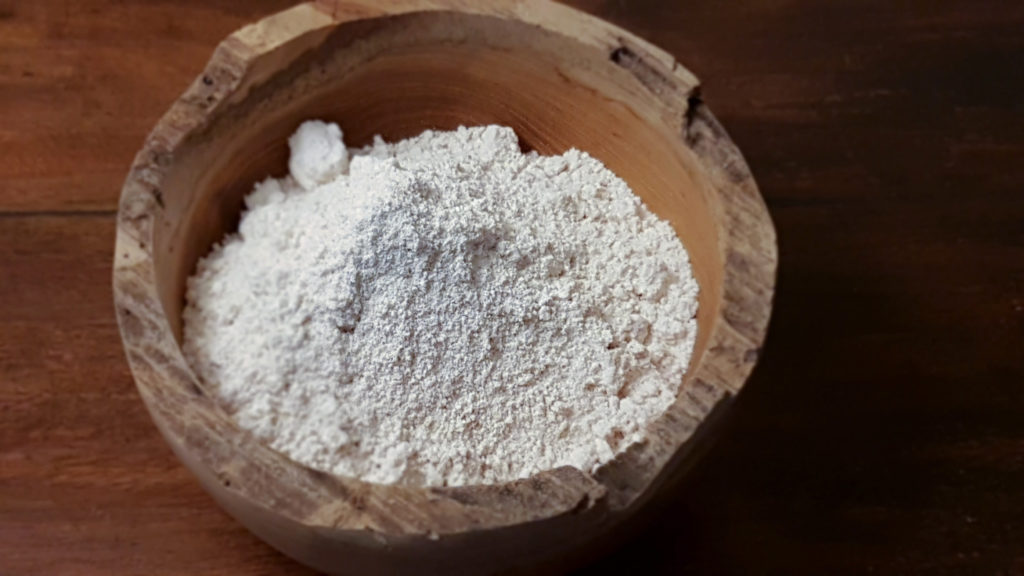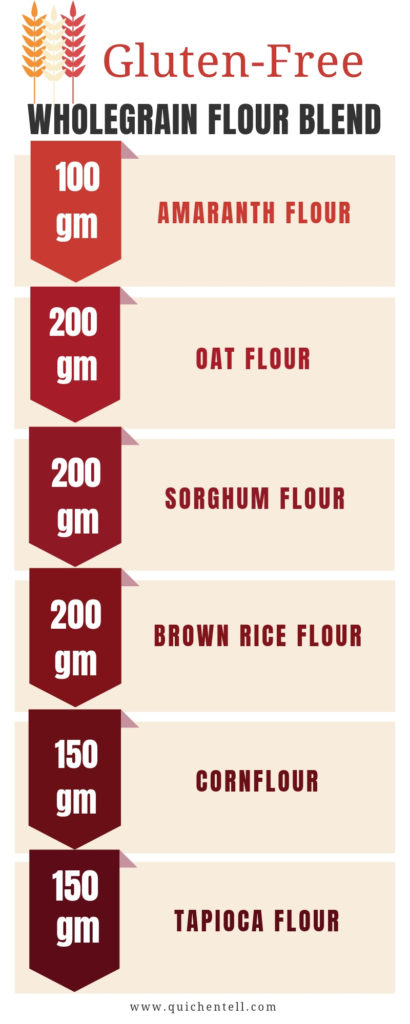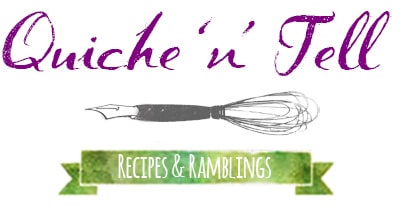Many recipes for all-purpose gluten-free flour blends contain only rice flour, potato flour and tapioca flour, especially if the aim is to keep the flour light or avoid certain grain allergies. The thumb rule for making your own gluten-free flour blend is to keep the ratio of whole grain flours and starchy flour at 70:30. Since my objective was not just to go gluten-free but to also get nutrition from using whole grains, I chose a blend that combines the 2 types of flours in that ratio. Most homemade GF flour blends can be tweaked to suit personal tastes and preferences and what works best for a particular recipe.

Sorghum Flour
Sorghum is a type of millet and when ground into flour, it is gluten-free, fairly neutral in taste and colour and ever-so-lightly grainy. This has made it a favourite of gluten-free bakers. It is often combined with starchy flours like tapioca or potato flour and is best used for baking muffins, pancakes, banana bread, cookies and pie crusts. Since it is flavour neutral, it can be used with whole host of fruits, nuts, spices and syrups to create both sweet and savoury dishes.
Oat Flour
Oats can be contaminated with gluten if they have been grown in the same field as wheat but otherwise oats are gluten-free. Oat flour is fibre-rich and has a sweet, light nutty taste and soft texture. This makes it ideal for baking but too much oat flour can make baked goods gummy. Upto a ¼ of the AP flour in quick breads, cakes, muffins and even a few yeast breads can be swapped for oat flour. A higher proportion of oat flour can be used in cookie recipes as it makes cookies a crumbly yet chewy.
Amaranth Flour
Amaranth comes to us from Aztec times. It is technically not a grain but a seed; but behaves and is used as a grain. Amaranth flour is buff-coloured, nutty or earthy in taste with a soft, not-too-gritty texture and is gluten-free. This flour is best used to substitute small quantities (about 25%) of regular AP flour. In the right quantity, it can help build a tender crumb but too much amaranth can make baked goods gummy and dense. It can be added to pancake batter, banana bread, muffins etc.
Corn Flour (also called corn starch in many countries)
My GF flour blend has corn starch, not corn flour. In the U S, corn flour is a separate product but has most of the properties of corn starch. While substituting, 3 tbsp of corn flour are needed to replace 1 tbsp of corn starch. Here, in India, corn flour and corn starch are the same thing. It is the starchy, carbohydrate part of the maize kernel and is completely gluten-free. Since corn flour is used as a thickener in gravies, sauces, soups, casseroles etc, it makes a perfect binding agent in GF products. It is soft, white and flavourless and turns into a gelatinous paste when cooked. It is used along with tapioca flour or rice flour to make up the starch in in GF flour blends.
Brown Rice Flour
Brown rice flour is a gluten-free flour milled from whole grain brown rice that still has its germ and bran. This gives the flour its light tan colouring and extra fibre. Brown rice flour has a slightly sweet, nutty taste and is ideal for GF recipes. It can be substituted for wheat flour for breading fried food. Pancakes, cookies, muffins and flatbreads can all be made with flour blends containing brown rice flour.
Tapioca Flour (also known as tapioca starch)
Tapioca is a starchy root, in fact a vegetable. Flour milled from it is white, tasteless, odorless and 100% starch. Since it is nutritionally poor, it is used mainly as a thickener or binding agent. So in a whole grain, gluten-free flour blend, tapioca flour behaves like rice flour or corn flour, giving body and binding the other GF flours.

To make this gluten-free flour blend, simply whisk the flours together in a large bowl store in a large airtight jar or better still in the fridge since many whole grain flours like amaranth can turn rancid quickly. This recipe yields 1 kg of whole grain gluten-free flour.
I used this gluten-free flour blend in banana bread, pancakes and muffins. I think cakes that require a lighter, airy crumb would need more starch than this recipe uses. But if you want to make carrot cake or chocolate cake or even brownies, this blend should work well.
